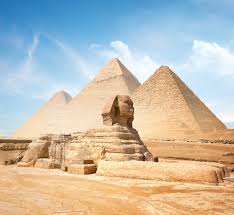Stamp: Asian Temple - Intl Express (United States of America 2004)
Asian Temple - Intl Express (United States of America 2004)
01 July (United States of America ) within release Personal Computer Postage - World Heritage, Series 1 goes into circulation Stamp Asian Temple - Intl Express face value Various United States dollar
| Stamp Asian Temple - Intl Express in catalogues | |
|---|---|
| Colnect codes: | Col: US 2004.07.00/1CVP05o |
Stamp is square format.
Inscribed "INTL EXPRESS" below "US POSTAGE" on stamp like Sn:US 1CVP36 Available in any denomination.Also in the issue Personal Computer Postage - World Heritage, Series 1:
- Stamp - Asian Temple - Aerogramme face value Various;
- Stamp - Asian Temple - EMS face value Various;
- Stamp - Asian Temple - GPM face value Various;
- Stamp - Asian Temple - GXG face value Various;
- Stamp - Asian Temple - Intl Air Letter face value Various;
- Stamp - Asian Temple - Intl Air Parcel face value Various;
- Stamp - Asian Temple - Intl Eco Letter face value Various;
- Stamp - Asian Temple - Intl Eco Parcel face value Various;
- Stamp - Asian Temple - Intl Express face value Various;
- Stamp - Asian Temple - Intl First Class face value Various;
- Stamp - Asian Temple - Intl Priority face value Various;
- Stamp - Asian Temple - Library Mail face value Various;
- Stamp - Asian Temple - M-Bag face value Various;
- Stamp - Asian Temple - M-Bag (Air) face value Various;
- Stamp - Asian Temple - M-Bag (Economy) face value Various;
- Stamp - Asian Temple - Mat for Blind face value Various;
Stamp Asian Temple - Intl Express it reflects the thematic directions:
A computer is a machine that can be programmed to automatically carry out sequences of arithmetic or logical operations (computation). Modern digital electronic computers can perform generic sets of operations known as programs. These programs enable computers to perform a wide range of tasks. The term computer system may refer to a nominally complete computer that includes the hardware, operating system, software, and peripheral equipment needed and used for full operation; or to a group of computers that are linked and function together, such as a computer network or computer cluster.
A globe is a spherical model of Earth, of some other celestial body, or of the celestial sphere. Globes serve purposes similar to maps, but, unlike maps, they do not distort the surface that they portray except to scale it down. A model globe of Earth is called a terrestrial globe. A model globe of the celestial sphere is called a celestial globe
A monument is a type of structure that was explicitly created to commemorate a person or event, or which has become relevant to a social group as a part of their remembrance of historic times or cultural heritage, due to its artistic, historical, political, technical or architectural importance. Examples of monuments include statues, (war) memorials, historical buildings, archaeological sites, and cultural assets. If there is a public interest in its preservation, a monument can for example be listed as a UNESCO World Heritage Site. The Palgrave Encyclopedia of Cultural Heritage and Conflict gives the next definition of monument:
A number is a mathematical object used to count, measure, and label. The most basic examples are the natural numbers 1, 2, 3, 4, and so forth. Numbers can be represented in language with number words. More universally, individual numbers can be represented by symbols, called numerals; for example, "5" is a numeral that represents the number five. As only a relatively small number of symbols can be memorized, basic numerals are commonly organized in a numeral system, which is an organized way to represent any number. The most common numeral system is the Hindu–Arabic numeral system, which allows for the representation of any non-negative integer using a combination of ten fundamental numeric symbols, called digits. In addition to their use in counting and measuring, numerals are often used for labels (as with telephone numbers), for ordering (as with serial numbers), and for codes (as with ISBNs). In common usage, a numeral is not clearly distinguished from the number that it represents.
A pyramid (from Ancient Greek πυραμίς (puramís) 'pyramid') is a structure whose visible surfaces are triangular and converge to a point at the top, making the shape roughly a pyramid in the geometric sense. The base of a pyramid can be of any polygon shape, such as trilateral or quadrilateral.




